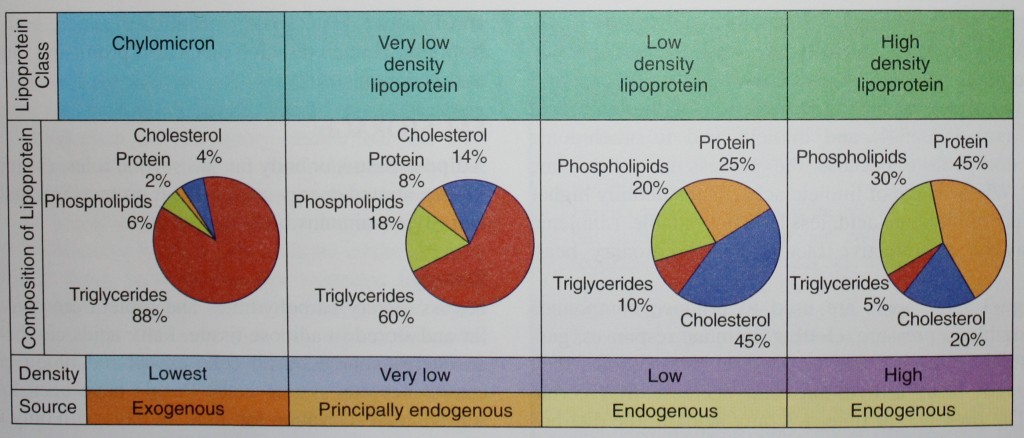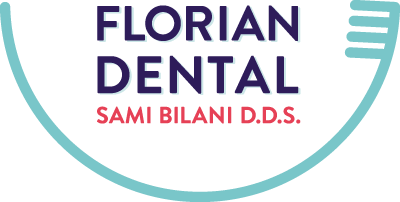COMPOUND LIPIDS
Phospholipids
Phospholipids contain phosphorus and a nitrogenous base
in addition to fatty acids and glycerol. Fats from plant and
animal foods contain phospholipids, but they are not required
in the diet because the body produces adequate amounts of
phospholipids. These substances cannot be absorbed intact;
they are broken down into their chemical components before
absorption. As a structural component of cell membranes,
tooth enamel, and dentin, they are the second most prevalent
form of fat in the body. As such, these substances are not
used for energy, even in a state of severe starvation. Although
the mechanism is not fully understood, phospholipids are
involved in the initiation of calcification and mineralization
in teeth and bones, and are present in higher amounts in the
enamel matrix of teeth than in dentin.
Phospholipids are important in fat absorption and trans-
port of fats in the blood. Phospholipids can mix with either
fat-soluble or water-soluble ingredients and transport these
products across membrane barriers.
Phospholipids include lecithin, cephalin, and sphingomy-
elins. Lecithin, the most widely distributed phospholipid, is
present in all cells. Lecithin supplements have been mar-
keted as reducing the risk of atherosclerosis. However, the
value of lecithin in this role is questionable because lecithin
is digested before it is absorbed. Cephalin is present in
thromboplastin, which is necessary for blood clotting.
Sphingomyelins are important constituents of brain tissue
and of the myelin sheath around nerve fibers. Phospholipids,
especially lecithin, are used as additives in commercial
products to prevent fat and water components from
separating.
Lipoproteins
Lipoproteins are produced by the body to transport insolu-
ble fats in the blood. Lipoproteins are compound lipids com-
posed of triglycerides, phospholipids, and cholesterol
combined with protein. The liver and intestinal mucosa
produce lipoproteins. Four different types of lipoproteins are
present in the blood: high-density lipoproteins (HDLs), low-
density lipoproteins (LDLs), very-low-density lipoproteins
(VLDLs), and chylomicrons.
The ratio of lipid to protein in lipoproteins varies widely;
these variations affect their density. Density increases as
lipids decrease and the protein increases. Lipoproteins can
be classified according to their density and composition, as
shown below. Phospholipids in lipoproteins are present
in approximately the same proportions in all individuals.
HDLs, which are protective against the development of
heart disease, contain larger amounts of protein and less
lipid. LDL cholesterol typically constitutes 60% to 70% of
the total blood cholesterol. It is considered the main agent in
elevated serum cholesterol levels, or the “bad” cholesterol.
Serum HDL, LDL, and VLDL are important predictors of
heart disease.

Characteristics of lipoproteins
CHOLESTEROL
Cholesterol is a fatlike, waxy substance classified as a sterol
(lipid) with a complex ring structure. Because the
body can produce all the cholesterol it needs, cholesterol
intake is not essential. Cholesterol has important functions
as a constituent of brain, nervous tissue, and bile salts; a
precursor of vitamin D and steroid hormones; and a struc-
tural component of cell membranes and teeth. Lipoproteins
transport cholesterol in the blood.
PHYSIOLOGICAL ROLES
ENERGY
Dietary fats are a concentrated source of energy, furnishing
9 kcal/g. Foods high in fats are generally referred to as
calorie-dense, which has its merits in some cases. Calorie-
dense foods are usually high in fats (or fat and sugar) and
low in vitamins and minerals and other nutrients. A charac-
teristic of calorie-dense foods is that less volume of food is
needed to furnish energy requirements. As an energy source,
fats are also referred to as protein-sparing because they
allow protein to be used for the important functions of build-
ing and repairing tissues.
SATIETY VALUE
Dietary fats are important for their satiety value. Fats con-
tribute to a feeling of fullness for a longer lime than carbo-
hydrates or protein because digestion of high-fat meals is
slower than other energy-containing nutrients. This fact has
given rise to such descriptions as “sticks to the ribs” in refer-
ence to rich meals. The higher the fat content of a meal, the
longer the food remains in the stomach. Nevertheless, about
95% of the ingested fats is absorbed. Soft fats that are liquids
at body temperature (e.g., margarine) are digested more
quickly than hard fats (e.g.. meat fats).
PALATABILITY
Fats contribute to palatability and flavor of foods. Their use
in cooking improves texture. A receptor has been identified
on the tongue that detects dietary fat, which may affect food
preferences. Preference for high-fat foods develops at an
early age and persists through adulthood.
COMPLEMENTARY RELATIONSHIPS
Fat-soluble vitamins and linoleic acid are generally found in
foods containing fat. The absorption of fat-soluble vitamins
is facilitated by the presence of fats in the gastrointestinal
tract.
Linoleic acid, an omega-6 fatty acid with 18 carbon
atoms and two double bonds cannot be synthesized
by the body and must be supplied from dietary
sources. If linoleic acid is not furnished in the diet, signs of
deficiency, including growth retardation, skin lesions, and
reproductive failure, result. For this reason, linoleic acid is
anessential fatty acid (KFA).
Arachidonic (18-carbon chain with four double bonds)
and linolenic (18-carbon chain with three double bonds)
acids are also considered EFAs, but healthy individuals
can produce them from sufficient quantities of linoleic
acid. Linolenic acid can he converted rapidly into omega-3
fatty acids in the body. The conversion of linolenic acid
to EPA and linoleic acid to arachidonic
acid is competitive because the process uses the same
enzyme. When intake of linoleic acid is substantially higher
than intake of linolenic acid, less EPA is available. Linolenic
acid may be a protective factor against coronary heart
disease.
Omega-3 fatty acids are used to produce compounds
regulating blood pressure, clotting, immune responses, gas-
trointestinal secretions, and cardiovascular functions; they
also prevent heart arrhythmias and decrease triglyceride
levels. The presence of omega-3 fatty acids in the diet has
been linked to reduction or amelioration of several chronic
diseases, including atherosclerosis (a complex disease of
the arteries in which the interior lining of arteries becomes
roughened and clogged with fatty deposits that hinder blood
flow) and atherosclerotic plaque, rheumatoid arthritis, pso-
riasis, inflammatory and immune disorders, and serious eye
problems such as macular degeneration.
Naturally occurring trans PUFAs, also called CLAs, in
foods have unique biological effects. Scientific studies in
animals have shown CLAs to decrease fat deposits; decrease
risk of different types of cancer and cardiovascular disease;
and improve bone health, insulin resistance, and immune
response. Human research on CLA is promising, but limited
at this time.
Dental Hygiene Considerations
- Lipids are an integral part of many foods and are important physiologically
- The primary form of fat in the body is triglyceride, not cholesterol
Nutritional Directions
- Frying foods at low temperatures causes the food to absorb excessive amounts of fats, whereas frying at very high temperatures results in decomposition of some fats, which can be irritating to the intestine and cause gastrointestinal discomfort after meals containing fried foods.
- The relatively small amounts of trans fatty acids that occur naturally in meat and milk products do not seem to be harmful.
- BHA and BHT are added to processed foods to retard or prevent spoilage.
to be continued…
